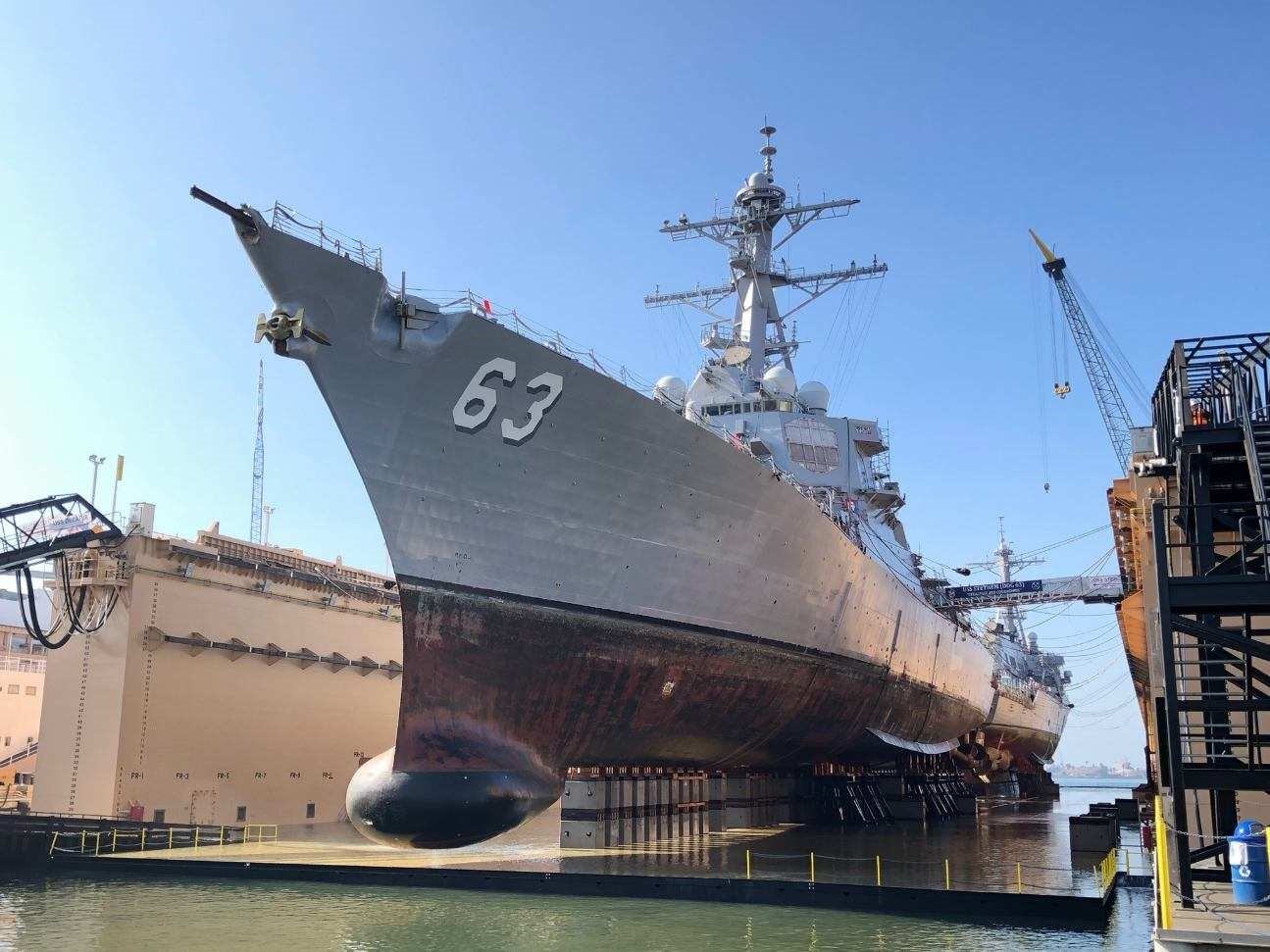While the U.S. Navy has spent nearly $3 billion to improve shipyard maintenance performance in recent years, “the shipyards continue to face persistent and substantial maintenance delays that hinder the readiness of aircraft carriers and submarines,” according to a government watchdog report released this week.
Three-quarters of the 51 aircraft carrier and submarine maintenance periods from fiscal 2015 to 2019 were completed late, resulting in 7,425 days of delays, according to the report by the Government Accountability Office.
The Navy’s four shipyards — in Portsmouth, Virginia; Kittery, Maine; Honolulu, Hawaii; and Bremerton, Washington — provide vital maintenance that includes ship overhauls, nuclear refueling, alterations and refits, among other duties.
The aircraft carrier maintenance periods that ended late exceeded their deadlines by an average of 113 days, the GAO reports, while submarine maintenance periods ending late missed the mark by an average of 225 days.
Such availabilities last anywhere from six months to three years, and when they don’t end on time, it gums up the entire system, delaying other maintenance periods, deployments and other needs.
RELATED

The main factors leading to the tardiness had to do with shipyard workforce performance and having enough people to perform the vital work, the GAO found. Unplanned work, or tasks identified after finalizing maintenance plans, was also cited as a significant factor resulting in the delays.
While the Navy has taken steps to address such delays, the sea service has yet to fully address the unplanned work and workforce factors causing the majority of delays, according to the GAO.
The Navy has in recent years relied on paying out “high levels of overtime” to carry out planned work, but shipyard officials told GAO investigators that “production shops at all four shipyards are working beyond their capacity,” and that certain rates of overtime have “been noted as resulting in diminished productivity.”
And while the sea service rolled out the “Shipyard Performance to Plan” initiative in 2018 to get a better grasp of maintenance issues, 13 of 25 planned metrics that would improve the Navy’s understanding of such delays have not been implemented, according to the GAO.
“In addition, the Shipyard Performance to Plan initiative does not include goals, milestones and a monitoring process that could improve the Navy’s understanding of the causes of maintenance delays,” investigators wrote.
“Without fully developing metrics and implementing goals, action plans, milestones and a monitoring process, the shipyards are not likely to address unplanned work and workforce weaknesses and the Navy is likely to continue facing maintenance delays and reduced time for training and operations with its aircraft carriers and submarines,” the GAO report warns.
Subs face “idle time” when they can’t get in for a maintenance period as originally scheduled, and that idle time has grown every year since fiscal 2015, according to the GAO.
Those boats waiting on maintenance have safety certifications that have expired or will soon expire, the report states.

“Without the safety certification to submerge, submarines are unable to perform their operations,” the GAO wrote.
All told, subs that completed or had ongoing maintenance from fiscal 2015 to 2019 incurred nearly eight years’ worth of idle time while waiting to get into a yard.
“According to Navy officials, they expect the number of days of idle time to continue to increase for the next 2 fiscal years,” GAO wrote. “Additional shipyard maintenance delays may also occur as a result of circumstances associated with the coronavirus pandemic.”
Such maintenance woes are not new and have ballooned as the fleet shrunk but the demand remained, resulting in increased operations tempo for ships, deployment extensions that made planning such availabilities difficult and increased wear and tear.
The GAO reported in 2018 that attack subs waiting to go into maintenance had sat idle for 10,363 days in the past decade, amounting to years of lost time and operational availability.
This week’s report recommends the Navy improve its workforce planning requirements to avoid having to consistently use overtime while finishing the development of shipyard performance metrics.
The sea service should also develop and implement goals, action plans, milestones and monitoring results, according to GAO.
“The Navy concurred with all three recommendations,” investigators wrote.
Geoff is the managing editor of Military Times, but he still loves writing stories. He covered Iraq and Afghanistan extensively and was a reporter at the Chicago Tribune. He welcomes any and all kinds of tips at geoffz@militarytimes.com.








